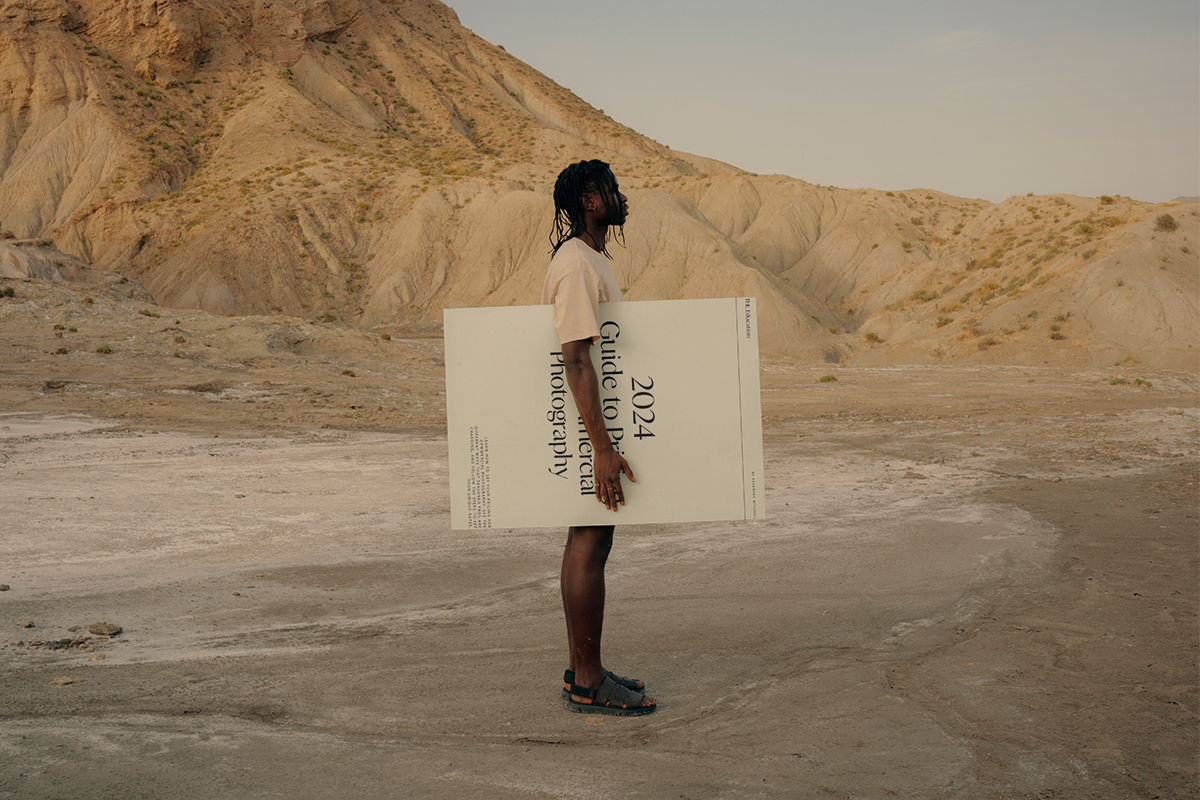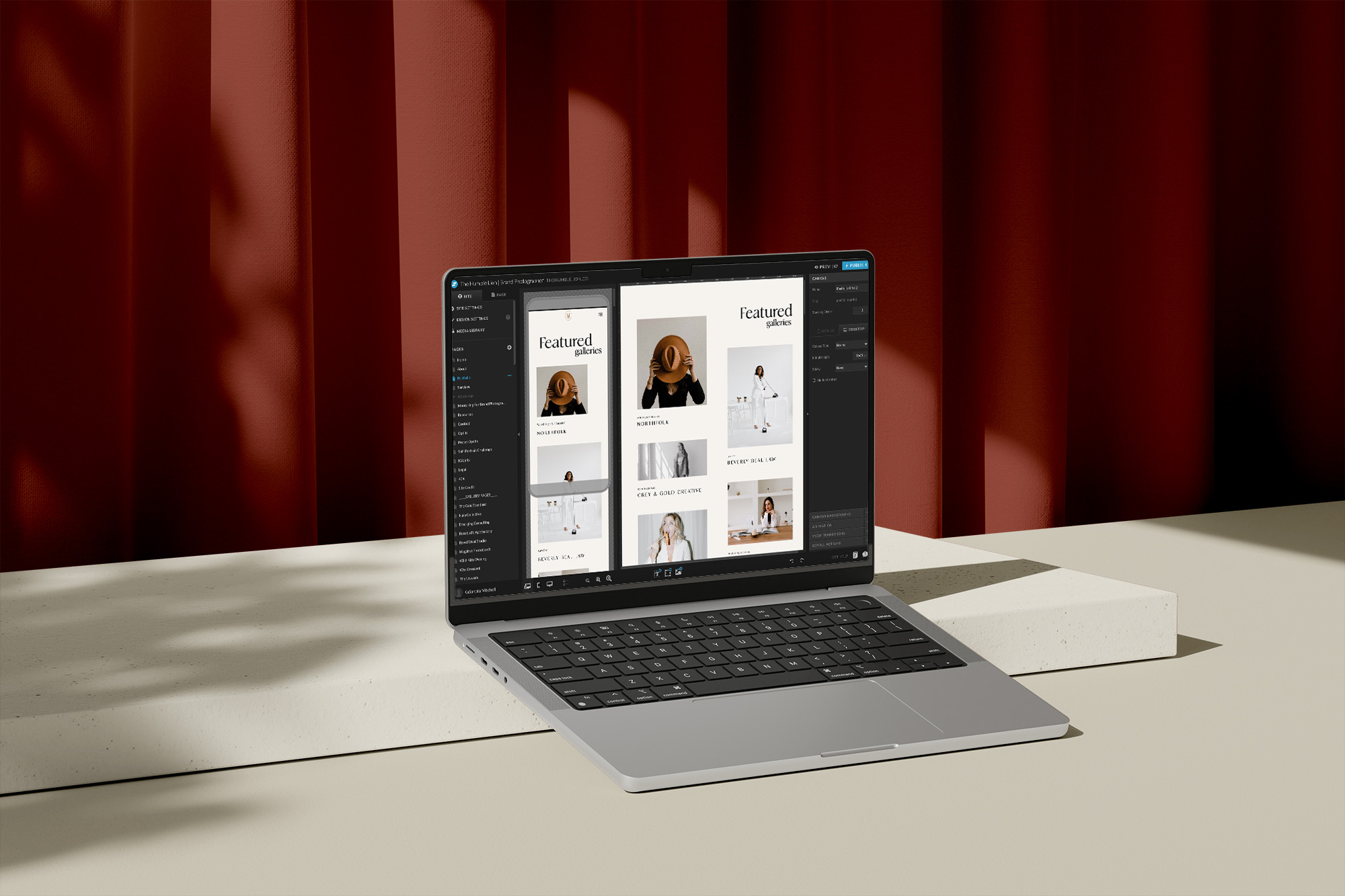Get ready for a new perspective when it comes to pricing for commercial photography.
A lot of photographers ask what to charge for commercial photography, but the real and first question is HOW to charge for your commercial photos. You can bill hourly, charge a one-time fee, or even ask for a commission. And let’s not forget image licensing fees (the intimidating, but truly sustainable option for brand photographers).
Different ways to charge for commercial photography
Roll up those sleeves and see which format connects most with your goals and way of running your business. To be totally transparent with you, I do not recommend charging hourly. However, it is one option that is used by other photographers, and I want you to be fully aware of the pros and cons of each.
Hourly
This seems like the simplest option at first. Charge for how much you work, right? But oftentimes, it’s hard to provide an accurate quote that will cover every single minute that you work.
From booking the client to preparing for the photoshoot, actually taking the photos, editing everything afterward, delivering the files — and all of the admin work, communication, and keeping-those-wheels-greased tasks along the way.
So if you’re charging just for the length of the photoshoot, you might (and should) want to rethink your pricing for commercial photography. Hence why we’re here.
Per photoshoot (packages)
This is super common in the wedding industry and has also recently been favored by commercial photographers. You can figure out how much you want to make per month, and then break that down into how many photoshoots you need to book.
By commission
A commission rate simply means that you’ll earn a portion of what your client makes from using your images. For example, if they use your photos to sell a new hiking backpack, you can set up an agreement with them that pays you a percentage of each sale.
I don’t necessarily recommend this option on its own, but it can work well when paired with a set photoshoot fee or your hourly fee (or even image licensing). After all, your income shouldn’t hinge on their success. Sales revolve around more than just the photo.
Through image licensing
This means setting a clear outline of how your images will be used and charging accordingly. If your client just needs one photo for one simple brochure they’ll be handing out at a farmer’s market, you’ll set a specific licensing fee for that.
However, if your client wants to use your photo on a Times Square billboard, the image licensing fee should probably much higher than that. Those are two extremes, but you can see here how quickly image licensing can benefit you if you’re paid for the ultimate value of your work (and the benefit it’s giving your client).
Intrigued by the idea of photography image licensing? Read this.
The importance of terms like day rate, creative fee & photography fee
These terms are tossed around in the industry, so it’s important to know how they could be misunderstood or improperly used. Plus, when you’re sending in a pitch that will compete with other photographers, clients like to know what they’re paying for. Using these terms correctly can help.
To note: I suggest including the day rate and creative fee as a starting point to cover your time when you calculate your pricing for commercial photography. From there, you can offer a flat-rate package for image licensing, or clients can license images on their own with separate fees, i.e. paying for each image they choose to use.
Day rate
I would never suggest using the term, “day rate,” on its own, especially if you don’t want clients to think that your work is all said and done in one single day. With the amount of pre-production planning and post-photoshoot editing required, a day rate really undermines the value of your work and time. However, if your invoice includes a day rate and image licensing fees, then you can proceed without concern.
Creative fee
This term instills more value and illustrates why they’re hiring you. My recommendation is to use this as a line item on invoices when charging for every hour you’re spending on the project, including your pre-production, production, and post-production work. Client consultations and strategic planning can also fall under the “creative fee.”
Photography fee
“Photography fee” is quite unclear and shouldn’t be used without a full explanation. Your work as a “photographer” includes quite a lot, so relying on the simple “photography fee” is confusing. Ultimately, you can use this phrase to describe costs for the photoshoot itself, which could include the day rate and pre/post-production fees.
Why you’ll love image licensing
Licensing your images is the perfect mix of recurring income and protection.
- Image licensing makes sure you get paid for as long as your images are being used
- When brands profit from your work, you will too
- This sets a standard of valuing you for your work, not just for your time
- Large companies can no longer exploit you
- Your work won’t get into the wrong hands
Think about it. The hotel you booked for your last weekend getaway and even your website platform — all charge you for the duration of your stay. Apps charge monthly or annually. Hotels will bill you for each additional night that you’re there. Your website host and design platform also charge until you shut down the website and stop using it altogether.
So why are photos seen as a one-and-done, you paid for the photoshoot, and now the images are yours for eternity? While this is great for the client, this is a curse for the photographer. Because now these photos, even if they continue to make money for your client, will typically earn you one fee, and then you have to go out and book another photoshoot.
Just like a hotel charges for each extra night that you stay there, or sells rooms at a higher rate because of the oceanside location, so too, should photographers be charging for how their work is used.
Steps to determine pricing for commercial photography
Regardless of how you’ll charge, follow these steps to figure out your own commercial photography rates.
- Know your cost of doing business
- Add up your expenses and personal living costs (like your rent or mortgage, bills, food, etc.). Read the full guide on photography CODB.
- Review booked work so far
- Do you have a history of work you can find common trends in? What kind of clients booked you, for what services, and how much have you been making so far?
- Identify the pricing structure that is best for you
- Hourly, a one-time fee, image licensing, commission, royalties, or even a custom mix (When pitching one single photoshoot, I highly suggest including your day rate, creative fee, and image licensing fees on the invoice.)
- Establish who your audience is
- What type of business do you serve?
- What investment can they afford? Are they bringing in millions per year or just a few thousand dollars per month?
- Why do they need photos, and how will they use them?
- Identify your scope of services
- Figure out what most of your clients will want with your services
- Will you be scouting out a location, booking a studio, securing models, scheduling planning consultations with the client, taking photos for 3+ hours, editing an entire gallery, delivering all of the photos, and more?
- Research competitors
- Look at location, niche, reputation, reviews, length of experience, social media following, and what’s included in their services (are they doing as much or less than you when it comes to the tangible features of their work)
- Reach out to other commercial photographers
- I wish I had done this from the beginning. It doesn’t hurt to ask for advice from other commercial photographers, whether it’s a simple DM on Instagram, or a formal inquiry through 1:1 mentoring.
- Be ready to adapt
- Sometimes you’ll update your prices and experience a drop in inquiries. That’s okay so long as you’re still booking what you need to. However, if the well of new clients dries up, you may want to look into deeper items like your brand image, copywriting, SEO, and social media — is there a gap?
- Know that it’s okay to charge a high-end fashion brand a different price than your local, family-owned donut shop.
What does commercial photography include?
When setting your rates, you need to consider every single expense and use of your time. (Don’t forget to read the Photography CODB post if you haven’t.)
The time you’ll spend on the project itself
- Onboarding — booking the client, setting up a contract, sharing welcome details
- Planning — picking out a location, booking a studio, securing models, attending strategy calls, answering emails (if you aren’t working with a producer, you should be doing all of these items, and accounting for it with your prices)
- Photography — shooting, culling, editing, re-touching, delivery
- Follow up — image licensing management, gathering reviews, maintaining client relationships
- Traveling to the site location and back (plus any other meetings)
Direct project fees
- Studio rental
- Models
- Re-touching
- Travel
- Image editing & delivery software
- Labor: assistants, stylists, second photographers, digital technicians
Overall business expenses
A portion of your annual expenses should always be accounted for with each project you book.
- Taxes & licenses
- Marketing
- Contract labor (when you outsource editing or social media)
- Credit card processing fees
- Equipment
- Meals & entertainment
- Office supplies
- Professional development
- Travel
- Materials
- Legal & professional
- Gifts
- Health insurance
- Cell phone
- Internet
- Utilities
- Rental expenses
- Refunds
- & more
4 Factors For Pricing Commercial Photography Projects
1. The size of the business
To better support small businesses, I don’t charge them the same fee or even sometimes the same format as I do with bigger businesses. After all, there’s a big difference between a photo going on a social media feed with 600 followers, versus that New York billboard with thousands of views every day.
2. The use of the images
Just for web and social media, or for a ten thousand-dollar ad campaign? Establish how and where the images will be used so you can price accordingly.
- Editorial — for publications and magazines
- Commercial — for marketing, ad campaigns, online stores
- Non-commercial — personal projects in which no money is generated from the content
- Exclusive — no one else can use the images
- Non-exclusive — you can sell the images to others if you choose to
- First rights — your client will be the first to use the photos, but you can sell them elsewhere afterward
3. The length that they’ll be used
This is one of the main reasons I started licensing my photos. I realized that the one-time photoshoot fee was not equal to the length of time the photos were benefitting my clients. Now, I set specific duration terms, stating that the client can only use the images for 6 months, 12 months, etc.
This ensures that if the photos are that valuable, and are needed for a longer period of time, you’ll be compensated accordingly.
4. The type of images
Are you providing product photography with highly detailed and creative edits, or are you offering lifestyle photos that can oftentimes be edited much more quickly and easily? The type of imagery and editing needed as a result should change how much you are charging.
There is no one size fits all
There is no one way to charge for commercial photography because there are endless types of brand photographers, and no one else quite like you — with your creative eye, photography style, and backstory.
Yes, look around and see what is out there, but create a distinct pricing structure that complements your way of life and work. If you need more help, check out The Humble Lion’s Brand Photography Pricing & Image Licensing Course.
Want more gritty advice like this? Follow The Humble Lion on Instagram.


